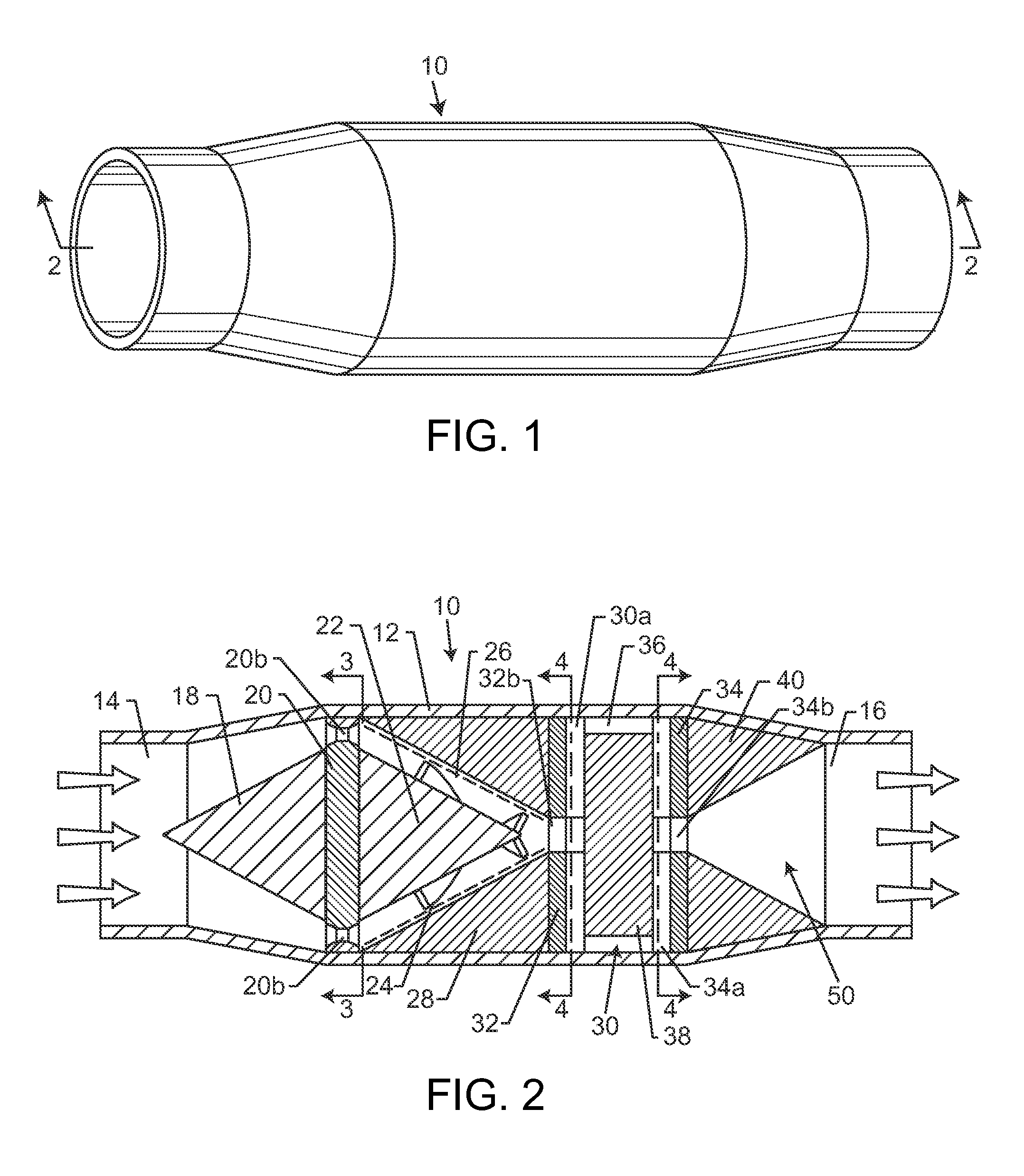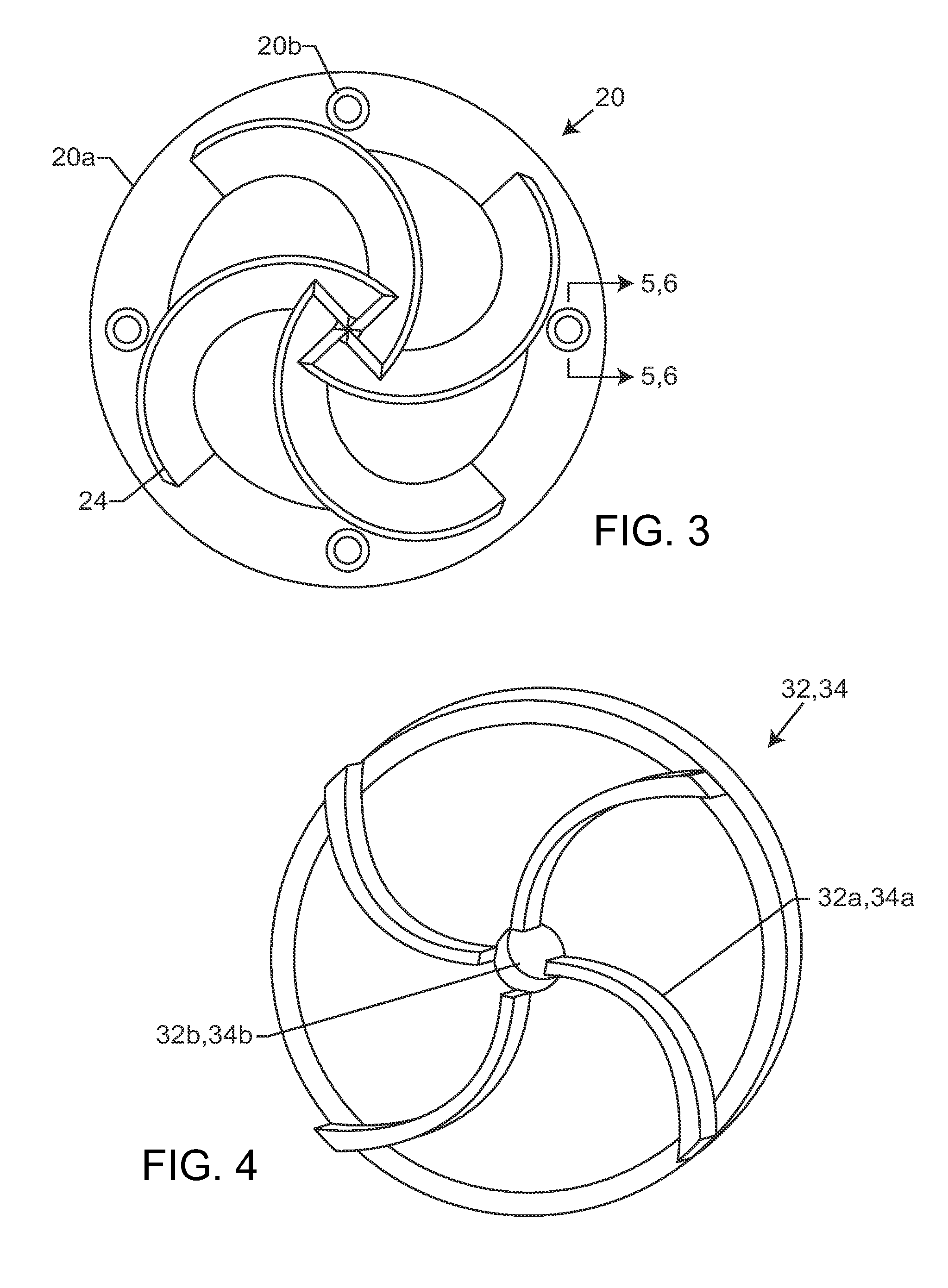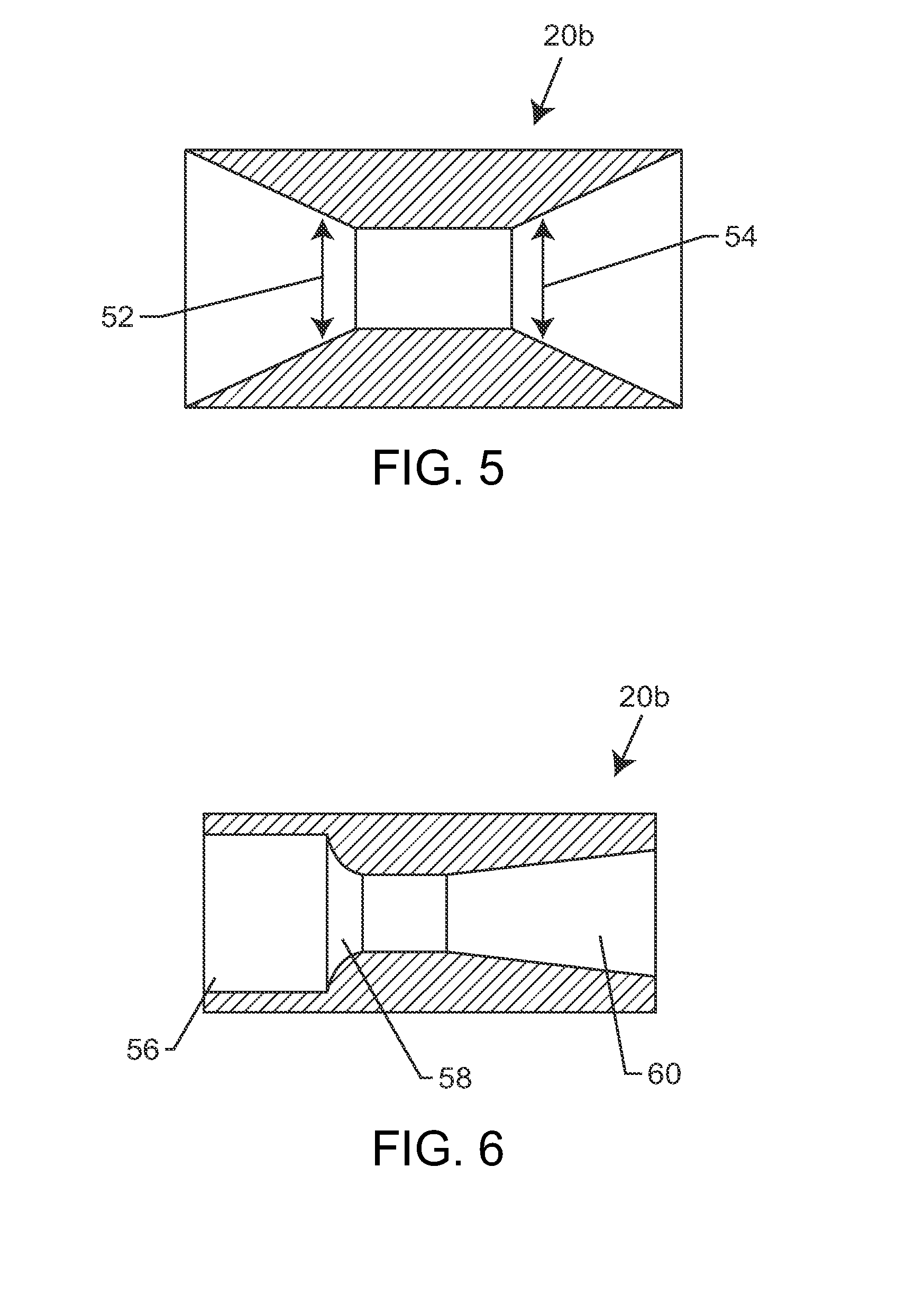Processes for increasing bioalcohol yield from biomass
a bioalcohol and biomass technology, applied in the direction of fuels, transportation and packaging, fatty-oil/fat refining, etc., can solve the problems of high production cost, high production cost, and final transient collapse, so as to reduce the smell of bioalcohol and improve taste.
- Summary
- Abstract
- Description
- Claims
- Application Information
AI Technical Summary
Benefits of technology
Problems solved by technology
Method used
Image
Examples
Embodiment Construction
[0073]The present invention is directed to a device and method for processing a fluidic reaction mixture via a hydrodynamic cavitation process with the result being the creation of new products. The reaction components inside the apparatus are influenced by pressure impulses and other features of controlled advanced hydrodynamic cavitation. The device and method herein described follows the aforementioned chemical reactions and processes such that the device stimulates cavitation in hydrodynamic liquids to the point where the end result is increased yield and quality of products.
[0074]A multi-step process for increasing bioalcohol yield from biomass using hydrodynamic cavitation is disclosed herein. More particularly, the multi-step process includes: (1) a process for the extraction of carbohydrates from biomass using hydrodynamic cavitation assisted acid pretreatment, alkaline delignification, and enzymatic hydrolysis; and (2) a process for converting the carbohydrates into a bioal...
PUM
| Property | Measurement | Unit |
|---|---|---|
| pressure | aaaaa | aaaaa |
| pressure | aaaaa | aaaaa |
| pressure | aaaaa | aaaaa |
Abstract
Description
Claims
Application Information
 Login to View More
Login to View More - R&D
- Intellectual Property
- Life Sciences
- Materials
- Tech Scout
- Unparalleled Data Quality
- Higher Quality Content
- 60% Fewer Hallucinations
Browse by: Latest US Patents, China's latest patents, Technical Efficacy Thesaurus, Application Domain, Technology Topic, Popular Technical Reports.
© 2025 PatSnap. All rights reserved.Legal|Privacy policy|Modern Slavery Act Transparency Statement|Sitemap|About US| Contact US: help@patsnap.com



